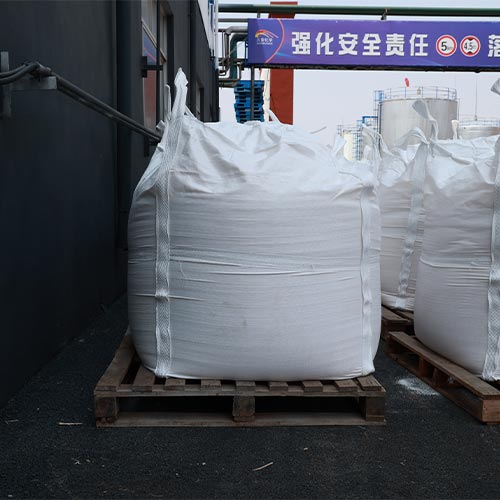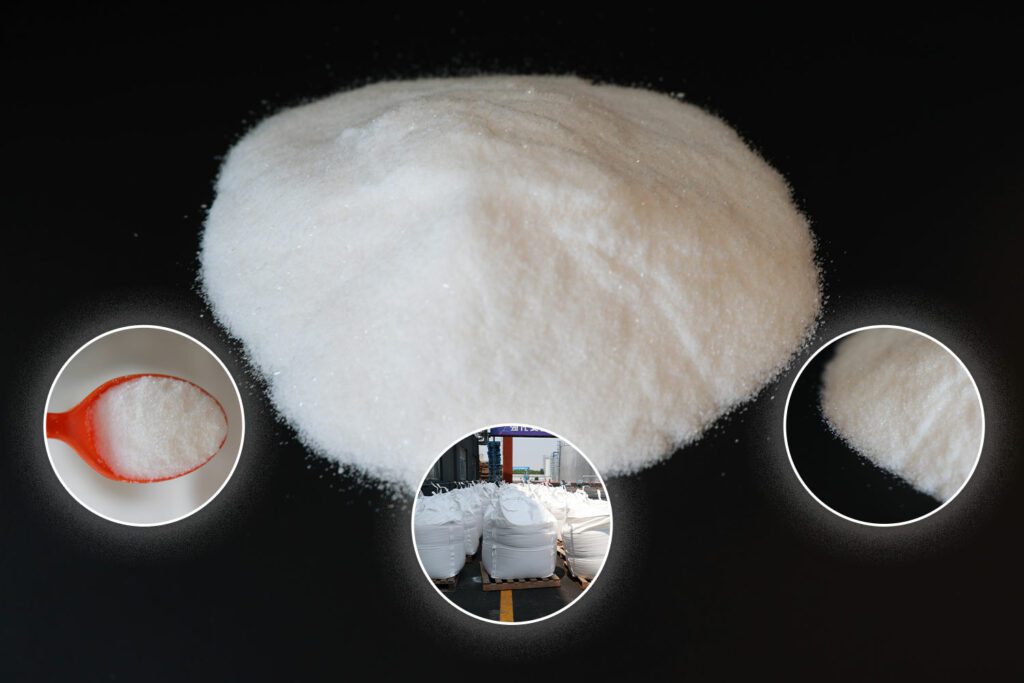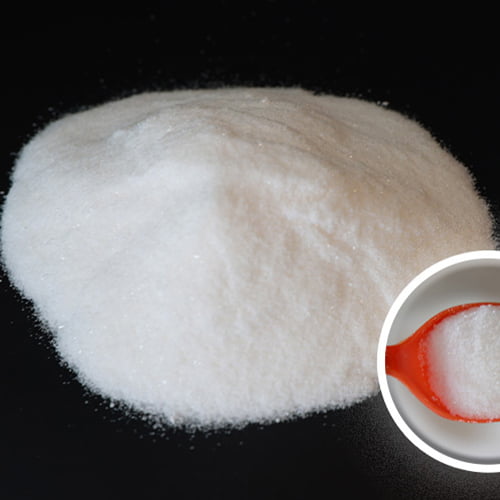Introduction
Sodium formate, a versatile chemical compound with the formula HCOONa, is widely used in various industries including pharmaceuticals, leather tanning, and de-icing. Understanding the mass of sodium formate in different solutions is crucial for optimizing its use in these applications. This comprehensive guide will delve into the importance of the mass of sodium formate, how to accurately calculate it, and its significance in various solutions. We will also explore practical examples and provide a detailed table to aid in understanding.
The Importance of Mass of Sodium Formate

Industrial Applications
Sodium formate is essential in numerous industrial processes. Knowing the precise mass of sodium formate in solutions is crucial for achieving desired results in:
- Leather Tanning: Acts as a buffering agent to maintain pH levels.
- Pharmaceuticals: Used as a preservative and in the production of certain medications.
- De-icing: Effective in lowering the freezing point of water on roads and runways.
Chemical Reactions
In chemical reactions, the mass of sodium formate plays a significant role in determining the reaction’s outcome. Accurate measurements ensure the correct stoichiometry, which is vital for:
- Yield Optimization: Ensures maximum product yield.
- Safety: Prevents unwanted side reactions that could be hazardous.
- Cost Efficiency: Minimizes waste of reactants.
Research and Development
In research and development, precise knowledge of the mass of sodium formate in solutions is essential for:
- Experiment Replication: Allows other researchers to replicate results accurately.
- Data Integrity: Ensures the reliability of experimental data.
- Innovation: Facilitates the development of new applications and products.
Calculating the Mass of Sodium Formate
Basic Calculations
Calculating the mass of sodium formate in a solution involves understanding its concentration and volume. The basic formula is:
[ \text{Mass} = \text{Concentration} \times \text{Volume} ]
- Concentration: The amount of sodium formate per unit volume of solution, typically expressed in mol/L (molarity) or g/L.
- Volume: The total volume of the solution in liters (L).
Practical Example
Consider a solution with a concentration of 2 mol/L and a volume of 0.5 L. The molar mass of sodium formate (HCOONa) is approximately 68.01 g/mol. The mass of sodium formate can be calculated as follows:
[ \text{Mass} = \text{Concentration} \times \text{Volume} \times \text{Molar Mass} ]
[ \text{Mass} = 2 \text{ mol/L} \times 0.5 \text{ L} \times 68.01 \text{ g/mol} ]
[ \text{Mass} = 68.01 \text{ g} ]
Advanced Considerations
In more complex scenarios, factors such as temperature, pressure, and the presence of other solutes can affect the mass of sodium formate. These factors should be accounted for to ensure accurate measurements.
Table: Mass of Sodium Formate in Various Solutions
| Solution Concentration (mol/L) | Volume (L) | Molar Mass (g/mol) | Calculated Mass (g) |
|---|---|---|---|
| 1.0 | 1.0 | 68.01 | 68.01 |
| 2.0 | 0.5 | 68.01 | 68.01 |
| 0.5 | 2.0 | 68.01 | 68.01 |
| 3.0 | 0.25 | 68.01 | 51.01 |
| 1.5 | 1.0 | 68.01 | 102.02 |
| 2.5 | 0.4 | 68.01 | 68.01 |
| 4.0 | 0.2 | 68.01 | 54.41 |
| 0.8 | 1.5 | 68.01 | 81.61 |
| 3.5 | 0.3 | 68.01 | 71.81 |
| 1.2 | 1.2 | 68.01 | 97.21 |
Practical Applications of Sodium Formate Mass Calculations

Leather Tanning
In leather tanning, the mass of sodium formate is crucial for maintaining the pH levels of the tanning solution. This ensures the leather remains flexible and durable. Accurate mass calculations prevent overuse or underuse, optimizing the tanning process.
- pH Control: Maintains appropriate pH levels.
- Quality Assurance: Ensures consistent quality of the leather.
Pharmaceuticals
In the pharmaceutical industry, sodium formate is used in various formulations. Knowing the precise mass is essential for:
- Dosage Accuracy: Ensures correct dosages in medications.
- Stability: Maintains the stability of pharmaceutical formulations.
De-icing
For de-icing applications, the mass of sodium formate determines its effectiveness in lowering the freezing point of water. Accurate measurements ensure optimal application rates, enhancing safety and efficiency on roads and runways.
- Effectiveness: Ensures the correct application rate for de-icing.
- Safety: Reduces the risk of accidents caused by ice.
Conclusion
Understanding and accurately calculating the mass of sodium formate in various solutions is essential for a wide range of industrial and scientific applications. From leather tanning and pharmaceuticals to de-icing and chemical reactions, precise knowledge of the mass of sodium formate ensures optimal performance, safety, and cost-efficiency. By following the guidelines and examples provided in this article, professionals can enhance their use of sodium formate, leading to better outcomes in their respective fields.
FAQ
What is sodium formate and what are its common uses?
Sodium formate is a chemical compound with the formula HCOONa. It is commonly used in various industries, including leather tanning, where it acts as a buffering agent to maintain pH levels; pharmaceuticals, where it serves as a preservative and in the production of certain medications; and de-icing, where it helps lower the freezing point of water on roads and runways.
How do you calculate the mass of sodium formate in a solution?
To calculate the mass of sodium formate in a solution, you need to know the concentration of the solution (in mol/L) and the volume of the solution (in liters). The formula is: Mass = Concentration × Volume × Molar Mass. For example, if you have a solution with a concentration of 2 mol/L and a volume of 0.5 L, the mass of sodium formate would be calculated as follows: Mass = 2 mol/L × 0.5 L × 68.01 g/mol = 68.01 g.
What are the benefits of using sodium formate in de-icing applications?
Sodium formate is beneficial in de-icing applications because it effectively lowers the freezing point of water, making it useful for keeping roads and runways clear of ice. It is less corrosive than other de-icing agents, such as chloride-based salts, and is biodegradable, making it more environmentally friendly. Accurate application rates of sodium formate are crucial to ensure optimal de-icing performance and safety.
How does sodium formate contribute to the pharmaceutical industry?
In the pharmaceutical industry, sodium formate is used for its preservative qualities and in the production of certain medications. It helps maintain the stability and efficacy of pharmaceutical formulations by preventing the growth of bacteria and other microorganisms. Accurate measurement and use of sodium formate are essential to ensure the safety and effectiveness of pharmaceutical products.
What is the importance of knowing the mass of sodium formate in solutions?
Knowing the mass of sodium formate in solutions is crucial for achieving desired results in various applications, including leather tanning, pharmaceuticals, and de-icing. It ensures correct dosages, optimal performance, and cost-efficiency.
How do I calculate the mass of sodium formate in a solution?
To calculate the mass of sodium formate in a solution, use the formula: Mass = Concentration × Volume × Molar Mass. This will give you the mass of sodium formate in grams.
Why is sodium formate used in leather tanning?
Sodium formate is used in leather tanning to maintain the pH levels of the tanning solution, ensuring the leather remains flexible and durable. Accurate mass calculations optimize the tanning process.
How does the mass of sodium formate impact its effectiveness in de-icing?
The mass of sodium formate determines its effectiveness in lowering the freezing point of water. Accurate measurements ensure optimal application rates, enhancing safety and efficiency on roads and runways.
What are the common concentrations of sodium formate solutions?
Common concentrations of sodium formate solutions vary depending on the application. Typical concentrations range from 0.5 mol/L to 4.0 mol/L, with the exact concentration chosen based on the specific requirements of the application.
Why is it important to use high-quality sodium formate in industrial applications?
Using high-quality sodium formate ensures consistent performance and reliability in industrial applications. It reduces the risk of impurities affecting the chemical properties and effectiveness of the sodium formate.



